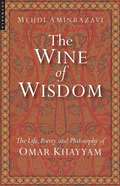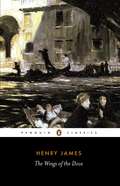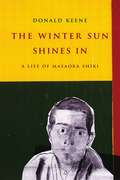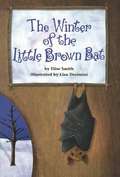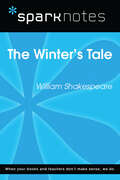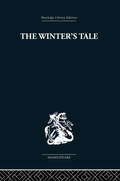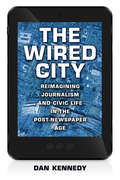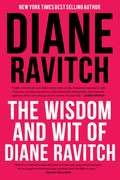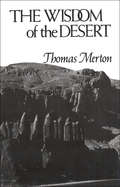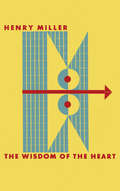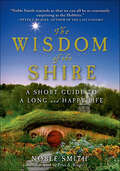- Table View
- List View
The Wine of Astonishment
by Earl LovelaceEarl Lovelace writes about the survival of a small community of Spiritual Baptists with a lyricism and understanding of dialogue which has established an international reputation.'If we clap we hands and catch the Spirit, the police could arrest us. One day we was Baptist, the next day we is criminals.'The Wine of Astonishment is a poignant and devastating tale of the discrimination the Black community of Bonasse faced during the first half of the 20th century. Told from the perspective of a religious wife, Eva retells the torment and tribulations her family and friends endure at the hands of abusive police and corrupt government officials. Hurtling towards its tragic climax, Bolo's transformation embodies the tragedy manifested when a people are pushed too far.
The Wine of Astonishment (Caribbean Modern Classics)
by Earl LovelaceEarl Lovelace writes about the survival of a small community of Spiritual Baptists with a lyricism and understanding of dialogue which has established an international reputation.'If we clap we hands and catch the Spirit, the police could arrest us. One day we was Baptist, the next day we is criminals.' The Wine of Astonishment is a poignant and devastating tale of the discrimination the Black community of Bonasse faced during the first half of the 20th century. Told from the perspective of a religious wife, Eva retells the torment and tribulations her family and friends endure at the hands of abusive police and corrupt government officials. Hurtling towards its tragic climax, Bolo's transformation embodies the tragedy manifested when a people are pushed too far.
The Wine of Wisdom: The Life, Poetry and Philosophy of Omar Khayyam
by Mehdi AminrazaviThe intoxicating message of Khayyam's famous Ruba'iyyat created an image of exotic Orientalism in the West but, as author Mehdi Aminrazavi reveals, Khayyam's achievements went far beyond the intoxicating message within these verses. Philosopher, mathematician, scientist, and mystic - his many different identities are examined here in detail, creating a coherent picture of this complex and often misunderstood figure.
The Wings of the Dove
by Henry JamesBeautiful Kate Croy may have been left penniless by her relatives, but her bold, ambitious nature ensures she will not succumb meekly to a life of poverty. If the financial circumstances of Merton Densher, the man she is passionately in love with, are not sufficient to secure her future, perhaps her cunning will. So when Milly Theale arrives in Europe from America, laden with wealth but also gravely ill, Kate sees an opportunity to exploit her vulnerability and devises a plan that will see her and Merton financially provided for. Her scheming is flawed though, for it fails to take into account the inconstancies of the human heart.John Bayley's introduction examines the novel in the context of James's other late, great works.
The Winter Sun Shines In: A Life of Masaoka Shiki (Asia Perspectives: History, Society, and Culture)
by Donald KeeneRather than resist the vast social and cultural changes sweeping Japan in the nineteenth century, the poet Masaoka Shiki (1867–1902) instead incorporated new Western influences into his country's native haiku and tanka verse. By reinvigorating these traditional forms, Shiki released them from outdated conventions and made them more responsive to newer trends in artistic expression. Altogether, his reforms made the haiku Japan's most influential modern cultural export.Using extensive readings of Shiki's own writings and accounts of the poet by his contemporaries and family, Donald Keene charts Shiki's revolutionary (and often contradictory) experiments with haiku and tanka, a dynamic process that made the survival of these traditional genres possible in a globalizing world. Keene particularly highlights random incidents and encounters in his impressionistic portrait of this tragically young life, moments that elicited significant shifts and discoveries in Shiki's work. The push and pull of a profoundly changing society is vividly felt in Keene's narrative, which also includes sharp observations of other recognizable characters, such as the famous novelist and critic Natsume Soseki. In addition, Keene reflects on his own personal relationship with Shiki's work, further developing the nuanced, deeply felt dimensions of its power.
The Winter of the Little Brown Bat (Comprehension Power Readers)
by Elise SmithLittle brown bats weigh only seven to fourteen grams and have a wingspan of 22-27 centimeters. This species of bat is the one most closely associated with humans, as it is the most likely to take up residence in buildings.
The Winter's Tale (SparkNotes Literature Guide Series)
by SparkNotesThe Winter's Tale (SparkNotes Literature Guide) by William Shakespeare Making the reading experience fun! Created by Harvard students for students everywhere, SparkNotes is a new breed of study guide: smarter, better, faster. Geared to what today's students need to know, SparkNotes provides: *Chapter-by-chapter analysis *Explanations of key themes, motifs, and symbols *A review quiz and essay topicsLively and accessible, these guides are perfect for late-night studying and writing papers
The Winter's Tale: A Commentary on the Structure
by Fitzroy PyleFirst published in 1969. Critics have in the past described The Winter's Tale as a work of "haphazard structure". More recent criticism has defended the structure of the play and this work shows that the evidence points to the fact that Shakespeare took infinite pains with the choice and disposition of the materials of The Winter's Tale. The scene-by-scene commentary considers The Winter's Tale in isolation, but prologue, epilogue and appendix place it in the context of related plays, and discuss, among others, the problem of genre as it affects the play.
The Winter's Tale: Critical Essays (Shakespeare Criticism #14)
by Maurice HuntA collection that includes a lengthy introduction describing historical trends in critical interpretations and theatrical performances of Shakespeare's play; 20 essays on the play, including two written especially for this volume (by Maurice Hunt and David Bergeron).
The Wired City: Reimagining Journalism and Civic Life in the Post-Newspaper Age
by Dan KennedyIn The Wired City, Dan Kennedy tells the story of the New Haven Independent, a nonprofit community website in Connecticut that is at the leading edge of reinventing local journalism. Through close attention to city government, schools, and neighborhoods, and through an ongoing conversation with its readers, the Independent's small staff of journalists has created a promising model of how to provide members of the public with the information they need in a self-governing society. Although the Independent is the principal subject of The Wired City, Kennedy examines a number of other online news projects as well, including nonprofit organizations such as Voice of San Diego and the Connecticut Mirror and for-profit ventures such as the Batavian, Baristanet, and CT News Junkie. Where legacy media such as major city newspapers are cutting back on coverage, entrepreneurs are now moving in to fill at least some of the vacuum. The Wired City includes the perspectives of journalists, activists, and civic leaders who are actively re-envisioning how journalism can be meaningful in a hyperconnected age of abundant news sources. Kennedy provides deeper context by analyzing the decline of the newspaper industry in recent years and, in the case of those sites choosing such a path, the uneasy relationship between nonprofit status and the First Amendment. At a time of pessimism over the future of journalism, The Wired City offers hope. What Kennedy documents is not the death of journalism but rather the uncertain and sometimes painful early stages of rebirth.
The Wisdom and Wit of Diane Ravitch
by Diane RavitchIn this unique collection of her most important writings, Diane Ravitch provides remarkable insights into her seminal thinking on public education, and on the dangers to democracy of treating parents as consumers, students as products, and teachers as compliant followers of commercial scripts.
The Wisdom of the Desert: Sayings From The Desert Fathers Of The Fourth Century (Shambhala Library)
by Thomas MertonThe Wisdom of the Desert was one of Thomas Merton's favorites among his own books--surely because he had hoped to spend his last years as a hermit. The personal tones of the translations, the blend of reverence and humor so characteristic of him, show how deeply Merton identified with the legendary authors of these sayings and parables, the fourth-century Christian Fathers who sought solitude and contemplation in the deserts of the Near East. The hermits of Screte who turned their backs on a corrupt society remarkably like our own had much in common with the Zen masters of China and Japan, and Father Merton made his selection from them with an eye to the kind of impact produced by the Zen mondo.
The Wisdom of the Heart
by Henry MillerAn essential collection of writings, bursting with Henry Miller’s exhilarating candor and wisdom In this selection of stories and essays, Henry Miller elucidates, revels, and soars, showing his command over a wide range of moods, styles, and subject matters. Writing “from the heart,” always with a refreshing lack of reticence, Miller involves the reader directly in his thoughts and feelings. “His real aim,” Karl Shapiro has written, “is to find the living core of our world whenever it survives and in whatever manifestation, in art, in literature, in human behavior itself. It is then that he sings, praises, and shouts at the top of his lungs with the uncontainable hilarity he is famous for.” Here are some of Henry Miller’s best-known writings: an essay on the photographer Brassai; “Reflections on Writing,” in which Miller examines his own position as a writer; “Seraphita” and “Balzac and His Double,” on the works of other writers; and “The Alcoholic Veteran,” “Creative Death,” “The Enormous Womb,” and “The Philosopher Who Philosophizes.”
The Wisdom of the Shire: A Short Guide to a Long and Happy Life
by Noble SmithIn The Wisdom of the Shire, Noble Smith sheds a light on the life-changing ideas tucked away inside the classic works of J. R. R. Tolkien and his most beloved creation—the stouthearted Hobbits. How can simple pleasures such as gardening, taking long walks, and eating delicious meals with friends make you significantly happier? Why is the act of giving presents on your birthday instead of getting them such a revolutionary idea? What should you do when dealing with the Gollum in your life? And how can we carry the burden of our own "magic ring of power" without becoming devoured by it? The Wisdom of the Shire holds the answers to these and more of life's essential questions.
The Wit In The Dungeon: The Life of Leigh Hunt
by Anthony HoldenHe was born in the year Dr Johnson died, and died in the year A.E. Houseman and Conan Doyle were born. The 75 years of Leigh Hunt's life uniquely span two distinct eras of English life and literature. A major player in the Romantic movement, the intimate and first publisher of Keats and Shelley, friend of Byron, Hazlitt and Lamb, Hunt lived on to become an elder statesman of Victorianism, the friend and chamption of Tennyson and Dickens, awarded a sate pension by Queen Victoria. Jailed in his twenties for insulting the Prince of Wales, Hunt ended his long, productive life vainly seeking the Poet Laureatship with fawning poems to Victoria. A tirelessly prolific poet, essayist, editor and critic, he has been described as having no rival in the history of English criticism. Yet Hunt's remarkable life story has never been fully told.Anthony Holden's deeply researched and vibrantly written biography gives full due to this minor poet - but major influence on his great Romantic contempories.
The Wit and Wisdom of Jane Austen
by Max Morris'Wisdom is better than wit, and in the long run will certainly have the laugh on her side.' Letter to Fanny KnightThis entertaining collection gathers together Jane Austen’s wisest and wittiest quotations. The Wit and Wisdom of Jane Austen is a book full of sense and sensibility that’s sure to delight all lovers of this great British writer’s uniquely humorous and perceptive style.
The Wit and Wisdom of William Shakespeare
by Max Morris'There is nothing either good or bad, but thinking makes it so.' HamletThis entertaining collection gathers together William Shakespeare’s wisest and wittiest quotations. The Wit and Wisdom of William Shakespeare proves that brevity is the soul of wit and is sure to delight all lovers of the Bard’s uniquely perceptive and influential works.
The Witch Must Die: The Hidden Meaning of Fairy Tales
by Sheldon CashdanIn The Witch Must Die, Sheldon Cashdan explores how fairy tales help children deal with psychological conflicts by projecting their own internal struggles between good and evil onto the battles enacted by the characters in the stories. Not since Bettelheim's The Uses of Enchantment has the underlying significance of fantasy and fairy tales been so insightfully and entertainingly mined.
The Witch in History: Early Modern and Twentieth-Century Representations
by Diane Purkiss'Diane Purkiss ... insists on taking witches seriously. Her refusal to write witch-believers off as unenlightened has produced some richly intelligent meditations on their -- and our -- world.' - The Observer'An invigorating and challenging book ... sets many hares running.' - The Times Higher Education Supplement
The Witlings and the Woman Hater (Pickering Women's Classics)
by Geoffrey M SillThis edition contains two of Frances Burney's comedies: "The Witlings", (1778-80) which satirizes the bluestockings; and "The Woman Hater" (1800-02), which explores social pretension and gender conflict.
The Witness Of Poetry (The Charles Eliot Norton Lectures #38)
by Czeslaw MiloszCzeslaw Milosz, winner of the 1980 Nobel Prize for Literature, reflects upon poetry's testimony to the events of our tumultuous time. From the special perspectives of "my corner of Europe," a classical and Catholic education, a serious encounter with Marxism, and a life marked by journeys and exiles, Milosz has developed a sensibility at once warm and detached, flooded with specific memory yet never hermetic or provincial. Milosz addresses many of the major problems of contemporary poetry, beginning with the pessimism and negativism prompted by reductionist interpretations of man's animal origins. He examines the tendency of poets since Mallarmé to isolate themselves from society, and stresses the need for the poet to make himself part of the great human family. One chapter is devoted to the tension between classicism and realism; Milosz believes poetry should be "a passionate pursuit of the real." In "Ruins and Poetry" he looks at poems constructed from the wreckage of a civilization, specifically that of Poland after the horrors of World War II. Finally, he expresses optimism for the world, based on a hoped-for better understanding of the lessons of modern science, on the emerging recognition of humanity's oneness, and on mankind's growing awareness of its own history.
The Witness as Educator: Reading W. G. Sebald, Aimé Césaire, and Walt Whitman
by David T. HansenIlluminates the power in bearing witness as an ethical orientation toward the world and its people.In The Witness as Educator, David T. Hansen examines the idea of bearing witness. He shows how it constitutes an ethical orientation that heeds human yearnings for justice, beauty, and meaning. He engages the work of three exemplary witnesses: W. G. Sebald, Aimé Césaire, and Walt Whitman. Sebald powerfully confronts the human costs of the violence of the nineteenth and twentieth centuries. Césaire evokes a creative Black consciousness in the face of European colonialism and attests to this outlook's joyous and painful development. Whitman's witness to American life, alongside his poignant testimony about caring for wounded soldiers during the American Civil War, speaks to a hope deeper than hope for the prospects of democracy. Hansen shows how these witnesses did not "choose" to write about their respective themes. They had to. The circumstances of their lives and the events of their time summoned them to bear witness. Hansen addresses how their efforts, supplemented by those of other witnesses whose testimony he incorporates, hold considerable educational promise in a world marked by continued misunderstanding and discord and yet also by great possibility.
The Wolf Shall Dwell with the Lamb: A Spirituality for Leadership in a Multicultural Community
by Eric H. F. LawThis groundbreaking work explores how certain cultures consciously and unconsciously dominate in multicultural situations and what can be done about it.
The Woman All Spies Fear: Code Breaker Elizebeth Smith Friedman and Her Hidden Life
by Amy Butler GreenfieldAn inspiring true story, perfect for fans of Hidden Figures, about an American woman who pioneered codebreaking in WWI and WWII but was only recently recognized for her extraordinary contributions.Elizebeth Smith Friedman had a rare talent for spotting patterns and solving puzzles. These skills led her to become one of the top cryptanalysts in America during both World War I and World War II. She originally came to code breaking through her love for Shakespeare when she was hired by an eccentric millionaire to prove that Shakespeare's plays had secret messages in them. Within a year, she had learned so much about code breaking that she was a star in the making. She went on to play a major role decoding messages during WWI and WWII and also for the Coast Guard's war against smugglers. Elizebeth and her husband, William, became the top code-breaking team in the US, and she did it all at a time when most women weren't welcome in the workforce. Amy Butler Greenfield is an award-winning historian and novelist who aims to shed light on this female pioneer of the STEM community.
The Woman Beyond the Attic: The V.C. Andrews Story
by Andrew NeidermanThis celebration of the woman who took us to the heights of a secluded attic and the depths of our own dark psyches reveals an intimate portrait of the famously private V.C. Andrews—featuring family photos, personal letters, a partial manuscript for an unpublished novel, and more.Best known for her internationally, multi-million-copy bestselling novel Flowers in the Attic, Cleo Virginia Andrews lived a fascinating life. Born to modest means, she came of age in the American South during the Great Depression and faced a series of increasingly challenging health issues. Yet, once she rose to international literary fame, she prided herself on her intense privacy. Now, The Woman Beyond the Attic aims to connect her personal life with the public novels for which she was famous. Based on Virginia&’s own letters, and interviews with her dearest family members, her long-term ghostwriter Andrew Neiderman tells Virginia&’s full story for the first time. The Woman Beyond the Attic is perfect for V.C. Andrews fans who pick up every new novel or for fans hoping to return to the favorite novelist of their adolescence. Eye-opening and intimate, The Woman Beyond the Attic is for anyone hoping to learn more about the enigmatic woman behind one of the most important novels of the 20th century.

